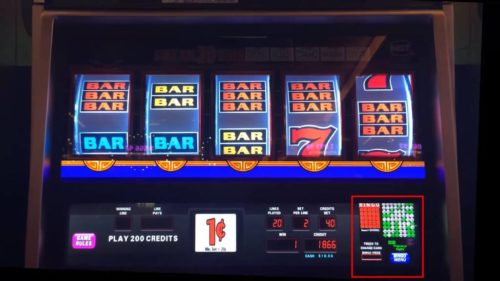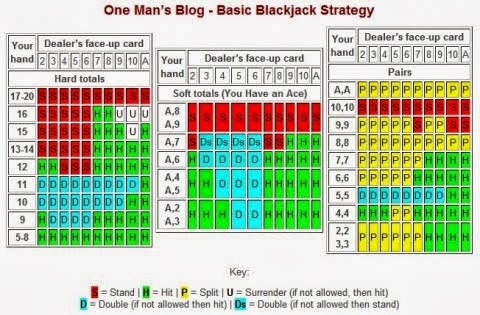Class Ii Slots Strategy
Thread Rating:
On the contrary to the Class II slot machines, Class III machines can make you a big winner. To sum it up, Class II slot machines are played among some players simultaneously who battle for a single prize, while Class III machines can be played by lots of different people at different times and they all seek for the payout from a single machine. The most popular slots are penny and nickel video games along with quarter and dollar reel-spinning games, though there are video games in 2-cent, 10-cent, quarter, and dollar denominations and reel spinners up to $100. Most reel spinners take up to two or three coins at a time while video slots can take 45, 90, and even 500 credits at a time.
To see how slots pay less than true odds to give the house an edge, let’s set up an example that’s as streamlined as slot odds can get, a game of the type used in the early decades after Charles Fey invented the three-reel slot machine in 1895. A hypothetical three-reel slot game with one 7, two bars, three cherries and four watermelons per. What are class 2 slot machines anyway? The phrase “class 2 slot machines” is misleading because the classification system is applied to all types of gambling games, not merely slot machines. In 1988 the United States Congress passed the Indian Gaming Regulatory Act. The law resolved some long-standing disputes between Native American. 5 Slot Machine Strategy Tips You Didn’t Know Existed By Gemma Sykes on February 9, 2012 We all believe that slot machines, one of the most popular casino games, are purely based on luck and nothing else.
Summary: Class II slot machines are found in Indian casinos (Class III is Vegas-style, or RNG). The reason why Class II exists is because originally, Indian casinos were only allowed to offer bingo, including electronic bingo. Modern Class II slot machines look and act just like an RNG slot machine.
At least two people must be playing in order for a Class II machine to run (one time I was unable to play because no one else was there). A bingo server draws a number about once a second. When you hit spin, the computer generates your bingo card and then it goes through all 23 possible winning patterns (22 normal patterns like T, corner spots, diamond, etc., and then this bizarre final 23rd one that a blackout in 75 balls wins a penny). A winning bingo pattern makes the reels stop at just the right spot so you win that much (no different than an RNG slot machine, just a different way of determining whether you win or lose). I read the help files on the machine but it doesn't explain everything. It doesn't explain how you get a red screen. Sometimes when you win, the screen turns red and the reels spin again, and when this happens, you always win something which is more than what you just won (i.e., not a regular free spin which can lose). I have never won a penny (that weird 23rd winning pattern). Probability of winning on a single payline is about 1 in 5 with the distribution of wins similar to an RNG machine, with lots of small wins and few large wins.
I've played these early in the morning when the casino is almost empty and at busy times to see if I can detect any pattern of advantage or disadvantage, and I can't tell. I've won when it's dead and lost when it's dead and I've won when it's busy and lost when it's busy.
Does anyone know if there is a player advantage or disadvantage to playing Class II slot machines when the casino is quiet or busy? Is the probability of winning exactly the same for bet 3 as it is for bet 1? (with the only difference being that the jackpot pays a bigger multiple of bet amt, similar to video poker)
Administrator
In general, the competitive element of a class II slot accounts for only about 1% of the return. It will generally go to whoever completes a certain pattern first. You could be competing with other players anywhere in the casino or even the world. The competitors may be playing on entirely different themed machines too.
 The other 89%, or so, of the return comes from 'consolation prizes,' which are fixed prizes for fixed patterns.
The other 89%, or so, of the return comes from 'consolation prizes,' which are fixed prizes for fixed patterns. It is that 1% of the competitive element that makes them legal.
In my opinion, if you're going to legalize slots, then just legalize them. Quit kidding yourself that class II slots are really bingo.
I've designed some class II slots so know a fair bit about the regulations and how they are designed.
In general, the competitive element of a class II slot accounts for only about 1% of the return. It will generally go to whoever completes a certain pattern first. You could be competing with other players anywhere in the casino or even the world. The competitors may be playing on entirely different themed machines too.
The other 89%, or so, of the return comes from 'consolation prizes,' which are fixed prizes for fixed patterns.
It is that 1% of the competitive element that makes them legal.
In my opinion, if you're going to legalize slots, then just legalize them. Quit kidding yourself that class II slots are really bingo.
Hey Wizard, I hate to necro this thread, but I was wondering - how is the RTP calculated for class II bingo slots when you never know how many people are going to be competing for that prize? As you mentioned, it's a small portion (1%), but how is that 1% calculated, if it can be? And wouldn't a busy casino theoretically bring down the RTP of the machine? Is there some sort of universal assumption on the average numbers of players that might be in on a game or something?
Thanks so much!
Class II slot machines look and act just like an RNG slot machine. Does it similar to skill based gaming machine or slot machines?

I would say they operate most similarly to Pace-O-Matic machines. Some other machines just, “Play,” the pre-seeded pool of spins over and over, whereas (from what I can tell from the patents) POM’s randomly select a result from the remaining pool of spins, kind of similarly to the Class II central server.
I also thought POM banks had a linked pool of spins, but that’s apparently not necessarily true is because I found two POMs in one location—one is out of $0.40/bet spins on a particular game and the other isn’t.

I would say they operate most similarly to Pace-O-Matic machines. Some other machines just, “Play,” the pre-seeded pool of spins over and over, whereas (from what I can tell from the patents) POM’s randomly select a result from the remaining pool of spins, kind of similarly to the Class II central server.
I also thought POM banks had a linked pool of spins, but that’s apparently not necessarily true is because I found two POMs in one location—one is out of $0.40/bet spins on a particular game and the other isn’t.
I wouldn't say Class II slot machines operate like POMS. The results are actually completely random & based on a math model, just like traditional slots. The difference is that the randomness is not based on where the reels land, it's based on the outcome of the bingo draw. Making it play 'like a slot' as a designer can be challenging because getting the desired volatility etc can be difficult to translate from traditional math models.

I wouldn't say Class II slot machines operate like POMS. The results are actually completely random & based on a math model, just like traditional slots. The difference is that the randomness is not based on where the reels land, it's based on the outcome of the bingo draw. Making it play 'like a slot' as a designer can be challenging because getting the desired volatility etc can be difficult to translate from traditional math models.
I agree with you, and that's actually kind of my point. The Class II slot machines randomly choose a result from the, 'Pool,' of remaining results in the central server and POM's do the same exact thing, according to their patent. The difference with POM is that the entire pool of results seems to be exclusive to an individual machine, (or maybe they can sometimes be linked) but either way, it's randomly chosen from the remaining results.
Class Ii Slots Strategy Games
WizardAdministrator
Hey Wizard, I hate to necro this thread, but I was wondering - how is the RTP calculated for class II bingo slots when you never know how many people are going to be competing for that prize? As you mentioned, it's a small portion (1%), but how is that 1% calculated, if it can be? And wouldn't a busy casino theoretically bring down the RTP of the machine? Is there some sort of universal assumption on the average numbers of players that might be in on a game or something?
Thanks so much!
The way it tends to work is the game will group 2 or more players together who made a bet at nearly the same time, say within a second of each other. Then the first player to complete some particular pattern (in the fewest balls) will win a very small prize. I wish I could take it further, but that's about all I know. When I do a class II game, the game maker will somehow tack on a competitive element, I only get asked to do the 'base game.'
Administrator

I would say they operate most similarly to Pace-O-Matic machines. Some other machines just, “Play,” the pre-seeded pool of spins over and over, whereas (from what I can tell from the patents) POM’s randomly select a result from the remaining pool of spins, kind of similarly to the Class II central server.
I also thought POM banks had a linked pool of spins, but that’s apparently not necessarily true is because I found two POMs in one location—one is out of $0.40/bet spins on a particular game and the other isn’t.
The ones I have seen don't work like that. The outcome is based on a fair bingo card and ball draw. I'm not saying there isn't anywhere that does it the way you describe, but I think I can speak for California (when there were class II), Oklahoma, and New Mexico.
Class Ii Slots Strategy Tactics
Class Ii Slots Strategy Guide
I agree with you, and that's actually kind of my point. The Class II slot machines randomly choose a result from the, 'Pool,' of remaining results in the central server and POM's do the same exact thing, according to their patent. The difference with POM is that the entire pool of results seems to be exclusive to an individual machine, (or maybe they can sometimes be linked) but either way, it's randomly chosen from the remaining results.
Class Ii Slots Strategy No Deposit
Hmm, as far as I know, Class II (Bingo) slots are not selecting a result from a pool of remaining results or a pool at all. Class II bingo is legal because you are actually playing Bingo behind the scenes, so mechanically, it must actually operate exactly like live bingo.Class Ii Slot Strategy
- Page 1 of 2